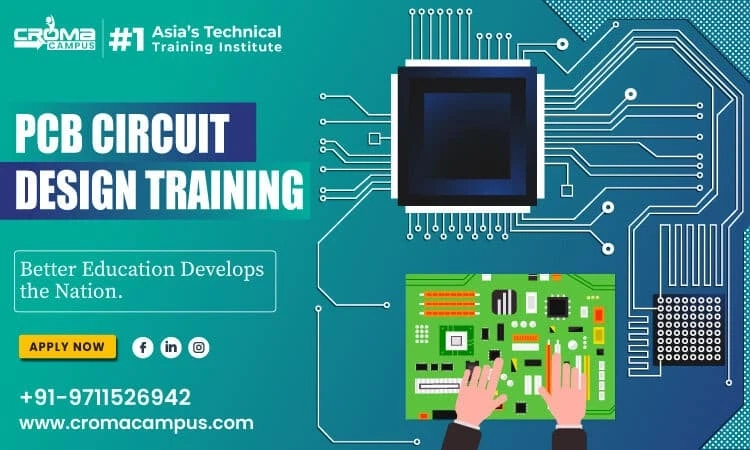A printed circuit board (PCB) is an electronic compilation, it uses copper conductors to create electrical connections between the corresponding components. Basically, printed circuit boards are useful in mechanical support for electronic components. The design is a way that a device can be fixed in an enclosure. Moreover, a printed circuit board design includes a specific set of steps that line up with the manufacturing process. Additionally, it also integrates circuit packaging and the structure design of the bare circuit board. Indeed, going for a PCB Circuit Design Training in Delhi will be beneficial in learning its dynamics. These circuit boards are useful in both the domestic and industrial sectors.
Different types of PCB available are:
Single-Sided PCBs: A single-sided PCB is an extensively designed printed circuit board. It consists of a single conductive copper layer above the substrate layer. The electrical components are placed on one side of the board, and the other side of the structured circuit is visible on the other. As these boards comprise only one conducting layer hence, the conductive paths cannot intersect or overlap each other. With an adverse effect, it takes up a lot of space. Thus, these PCBs are suitable for low-density design requirements. These are useful in basic and low-cost electrical/electronic instruments such as calculators, power supplies, timing circuits, LED lighting boards, FM radios, and so on.
Double-Sided PCBs: A thin layer of conducting material, such as copper, is added to both the top and bottom sides of the board in a double-sided PCB. Double-sided PCBs are in use in a variety of applications are cell phone systems, HVAC applications, power monitoring, test equipment, amplifiers UPS system, and many more. On the advantageous side, it makes the circuit compact. With less cost and more flexibility, it increases circuit density.
Multi-Layer PCBs: Multilayer PCBs comprise more than two copper layers. Multilayer PCBs are designed in the form of a sandwich structure. Where both layers are equal in size and composition. Multi-layer PCBs are useful in computers, laptops, GPS trackers, mobile phones, tablets, and medical equipment
Rigid PCBs: Going by the name, a rigid PCB is a circuit board that does not allow twists or folds. These boards are built in a structure where once made they can be no modifications or changes. Rigid PCBs are useful in X-rays, heart monitors, CAT scans, MRI systems, temperature sensors, control tower instrumentation, and more.
Flex PCBs: Polyamide or a transparent conductive polyester film helps in building Flexible PDBs. Flex PCBs are useful in, cellular telephones, cameras, organic light emitting diode (OLED) fabrication, LCD fabrication, flex solar cells, automotive industries, and complex electronics products such as laptop computers.
Rigid-Flex PCBs: A Rigid-Flex PCB is a hybrid compilation of circuit boards that combines elements from both flexible and rigid circuit boards. Further, it results in a board that can be folded or continuously flexed. It is useful in generating 3D outputs.
Conclusion
Looking at the extensive use of this design tool, you can definitely think of a career in this field. For a descriptive approach to learning, you can target PCB Circuit Design Training in Noida to get the general idea behind this program. PCB Circuit Designs are in use in all sectors. With the increase in demand, the number of PCB services is also on the rise. An elaborate PCB design can help in lowering the chances of errors. Further, it is helpful in the areas of short circuits. An innovative PCB designer has some great chances to explore the field.



